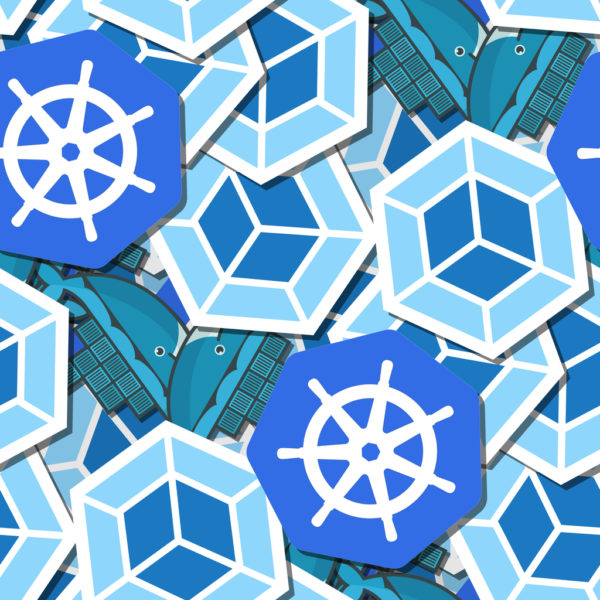Kubernetes (K8s), an open source container-orchestration system for app deployment, has been in existence for six years. Over time, it’s developed a very loyal community of users (including myself) who have come to appreciate its many benefits, which include a high amount of fault tolerance and portability. So, you’re probably thinking to yourself, “If it’s been around for six years, why is now the time to adopt Kubernetes?” After working in Kubernetes on multiple client projects, I can honestly say that there’s never been a better time to develop on this platform. Here’s why.
Tried and true stability
The open source community drives a lot of innovation, which has contributed to Kubernetes becoming an extremely stable platform. It’s also led to incredible tooling to accelerate cloud native development like Skaffold, KinD and Helm. Open source tools like FluxCD and Gatekeeper are used to enable companies to scale up multiple teams delivering to the same k8s cluster while enforcing custom security policies. Bitnami’s Kubernetes Production Runtime suite is a collection of standard open source tools that cover the monitoring, logging and ingress needs of a typical production cluster.
Write once, deploy anywhere
A big payoff of this open source, cloud native development practice is that the same workload and infrastructure can be declared once and run across a variety of cloud vendors. AWS, Google Cloud and Microsoft Azure, among others, all offer managed Kubernetes services, so deploying and scaling your workloads uses the same assets and tooling, no matter what cloud you’re on. Developers and stakeholders alike enjoy this portability, which enables them to make decisions based more on application requirements rather than infrastructure limitations. Federated clustering and the Istio project even make it possible to coalesce multiple clusters running across different cloud vendors, geographic regions, and on-premises into a single unit.
Big Tech has taken notice
Over the last year, some of the biggest names in technology have been making equally big investments in open source and Kubernetes-related projects and developers. In July 2019, IBM acquired Red Hat, the largest open source software designer on the market, for $34 billion. IBM previously stated that working in the Cloud was one of its four key growth drivers, so with the acquisition of Red Hat, they’re making themselves a more fearsome competitor in the cloud computing race.
Earlier this year, there started to be some whispers about Apple hiring a number of well-known Kubernetes and open source software engineers. Insiders say that this can only mean that Apple is finally realizing the value of open source platforms like Kubernetes when it comes to tech infrastructure (an area where, like IBM, Apple has also lagged compared to its competitors).
If you’ve considered making the switch to Kubernetes in the past, but haven’t made the jump just yet, I would argue that now, more than ever, is the best time to adopt K8s. With the open source community dedicating six years to stabilizing the platform and developing its consistency and portability, along with huge tech companies making investments in the technology, don’t wait any longer to adopt K8s.
Read “Knative: The Latest Addition to the Kubernetes Toolkit” by Thomas Smith
About the Author
Thomas Smith is a container evangelist and loves helping craft cloud native solutions. When not building containers, he can be found cycling the Bosque trails of Albuquerque or creating generative music.

How AI Helped Me Think Like a Designer Before I Had One
When a UX gap threatened to slow a critical user flow update, our product team had no choice but to adapt. In this article, Director of Product Brittany Langosch discusses how although there's no substitute for a talented designer, using AI tools like ChatPRD and V0 can support fast collaboration and clear decision-making in a pinch.

Snowflake Summit 2025 Announcements
Snowflake Summit 2025’s latest announcements made it clear: the path to genuine AI-driven impact hinges on frictionless access to data, the ability to act on it with clarity, and absolute confidence in its protection. Learn more about how they're making that happen for customers in this article.

How ChatPRD Helps Build Better Stories (and a Stronger Team)
When user stories are vague, it slows down delivery, trust, and momentum. This article by Senior Product Strategy Consultant Traci Metzger shows how she used a lightweight, AI-guided system (ChatPRD) to write clearer, developer-ready requirements that actually accelerated execution.

QA in the Age of AI: The Rise of AI-Powered Quality Intelligence
As organizations push code to production faster, respond rapidly to new customer needs and build adaptive systems, the expectations on quality have changed. It's no longer enough to simply catch bugs at the end of the cycle. We’re entering an era where quality engineering must evolve into quality intelligence and organizations adopting quality intelligence practices are reporting measurable gains across key delivery metrics. Learn more in this article by Principal Engineer Jarius Hayes.
